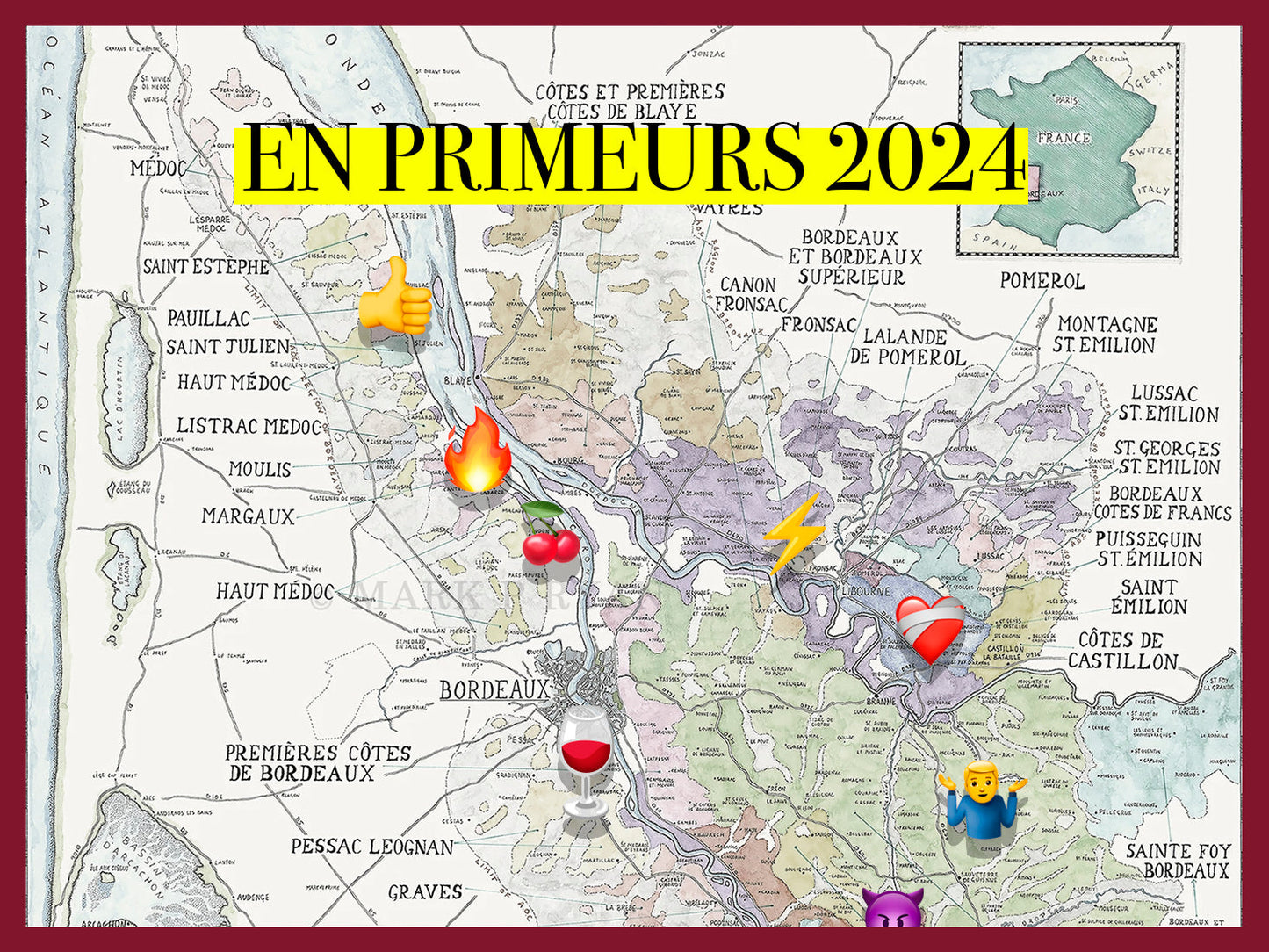
Text by: Gleb King
In a world of fast consumption, few things reward patience like buying en primeur. Bordeaux Futures offer more than early access – they’re a way to connect directly with the narrative of a vintage, before it’s sealed in glass and priced for shelves. Buying now isn’t just smarter economically; it’s more personal. You’re not just selecting a wine – you’re trusting a vineyard, a decision, a weathered growing season.
The 2024 vintage proves exactly why Futures still matter. With climate pushing Bordeaux’s margins, the differences between terroirs have never been more meaningful. It’s no longer just Left Bank versus Right Bank – it’s gravel that drains versus clay that holds; it’s slopes that capture sun versus flats that trap moisture. In 2024, what lay beneath the vine shaped everything above it.
Some appellations thrived through smart farming and lucky geography. Others struggled. But the beauty of Bordeaux is how these layers – of soil, variety, and vision – create wines that are as diverse as they are expressive. Understanding the vintage through terroir isn’t just an exercise in tasting; it’s a lens into resilience, adaptation, and artistry. This article guides you through that map – with wines you can claim now, at their most intimate stage: still forming, still evolving, but already full of promise.
Médoc & Haut-Médoc

Cabernet Sauvignon was the standout in the gravel-rich soils of the Médoc. Thanks to their later ripening and deep root systems, vines weathered the spring rains better than Merlot. The result are structured but refined reds with moderate alcohol, vibrant acidity, and clean fruit expression. Not powerhouses, but finely tuned wines with classic Left Bank definition. Like Château Potensac and Château La Lagune.
Pauillac, Saint-Julien & Saint-Estèphe
These northern Médoc appellations performed best in 2024. Well-drained terroirs and experienced vineyard teams minimized disease impact. Cabernet-driven blends here offer elegance over density: cassis, graphite, floral notes – and precise tannins that promise graceful evolution, even if not built for decades. Think Château Leoville Las Cases and Château Ducru Beaucaillou.
Margaux

Further south, Margaux faced more variation. Merlot struggled on heavier soils, but top sites that leaned into Cabernet Franc and Cabernet Sauvignon delivered graceful, aromatic wines. Château Margaux and Château Palmer performed at their best. Expect soft red fruit, florals, and balanced texture – charming, early-accessible expressions of the appellation.
Saint-Émilion & Pomerol

The Right Bank bore the brunt of early-season mildew and poor flowering. Merlot yields dropped dramatically. Yet in clay-limestone plots with good canopy management and strict selection, quality was preserved. Wines here are silky, with bright cherry fruit and herbal lift, though less flesh and volume than in riper years. Château Cheval Blanc did an amazing job.
Graves & Pessac-Léognan

A mixed bag. Reds suffered from mid-season rains, yet top estates managing Cabernet-focused blends achieved balance and tension – like Château Haut Brion. Dry whites, however, were superb: Sauvignon Blanc and Sémillon harvested before fall storms retained freshness, aromatics, and minerality. One of the best samples here is Château Smith Haut Lafitte Blanc.
Sauternes & Barsac
Botrytis was late and uneven, with grey rot complicating matters. Yields were modest and styles lighter than usual – but the best sweet wines shine with purity, lifted citrus, and floral energy. Less opulent than in classic years, but beautifully modern in style. The star here is Extravagant Du Château Doisy Daene.
Entre‑Deux‑Mers & Bordeaux Supérieur
This was a tough year for volume but not without quality. Many producers focused on Merlot-led blends with earlier picking and light extraction, resulting in approachable, fresh reds with soft tannins and bright fruit. White wines in the region are zesty, straightforward, and food-friendly.
